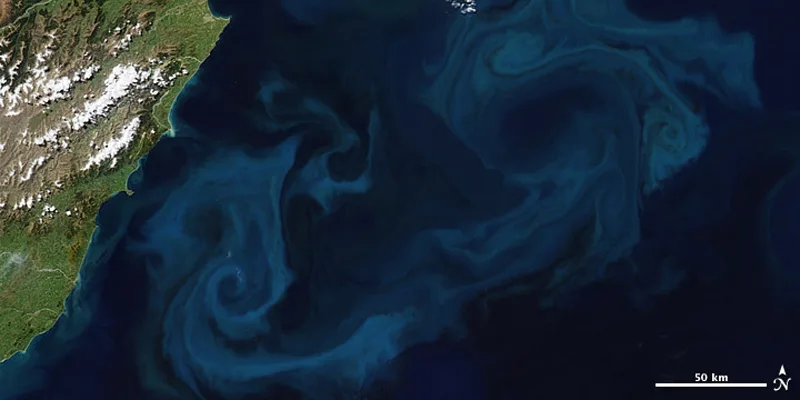Why we care
Iron is a critical limiting nutrient for phytoplankton in the ocean. Iron fertilization adds this limiting nutrient to promote phytoplankton blooms as a way to take up carbon dioxide and store carbon when they sink. Unknowns on the effectiveness, measurement and monitoring need to be addressed. To address these unknowns, this project uses iron fertilization simulation experiments that are larger and longer than prior studies.
What we will do
This project studies the effectiveness of iron enrichment for carbon capture at different scales and the long-term effects of regional iron fertilization. Researchers will conduct Observing System Simulation Experiments using ocean biogeochemical models to design the required observing systems, and assess the potential impacts of instrumentation. The Observing System Simulation Experiments will target field trials in three regions: the Southern Ocean, the Equatorial Pacific, and the Subarctic Pacific. High resolution models will examine the extent of carbon sequestration and potential effects on local and remote ecosystems on a small scale. Global biogeochemical models will explore the long-term effects of regional iron fertilization, including carbon sequestration and monitoring of ecosystem perturbations.
Benefits of our work
This project will address the effectiveness of ocean iron fertilization as a carbon dioxide removal technique, identify potential unintended ecological consequences, and determine the necessary systems for monitoring carbon and ecosystem changes. The study addresses questions regarding the magnitude, duration, observing systems, time scales, and impacts on ecosystem services of iron fertilization. The broader scientific community will have input to improve the Observing System Simulation Experiments. These global models, when run over many years, will also investigate the ocean’s capacity to absorb atmospheric carbon dioxide by means of iron fertilization and the fundamental changes that the method may cause to ocean ecosystems.
Award amount: $1,983,731
Funding source(s): NOAA Global Ocean Monitoring and Observing (GOMO), NOAA Ocean Acidification Program (OAP), National Science Foundation
Project duration: 3 years
Investigators
Dennis McGillicuddy, Woods Hole Oceanographic Institution
Ken Buesseler, Woods Hole Oceanographic Institution
John Dunne, NOAA Geophysical Fluid Dynamics Laboratory
Kristen Krumhardt, National Center For Atmospheric Research
Matthew Long, National Center For Atmospheric Research
Charles Stock, NOAA Geophysical Fluid Dynamics Laboratory
Weifeng (Gordon) Zhang, Woods Hole Oceanographic Institution
Read the press release from the Woods Hole Oceanographic Institute (WHOI).



